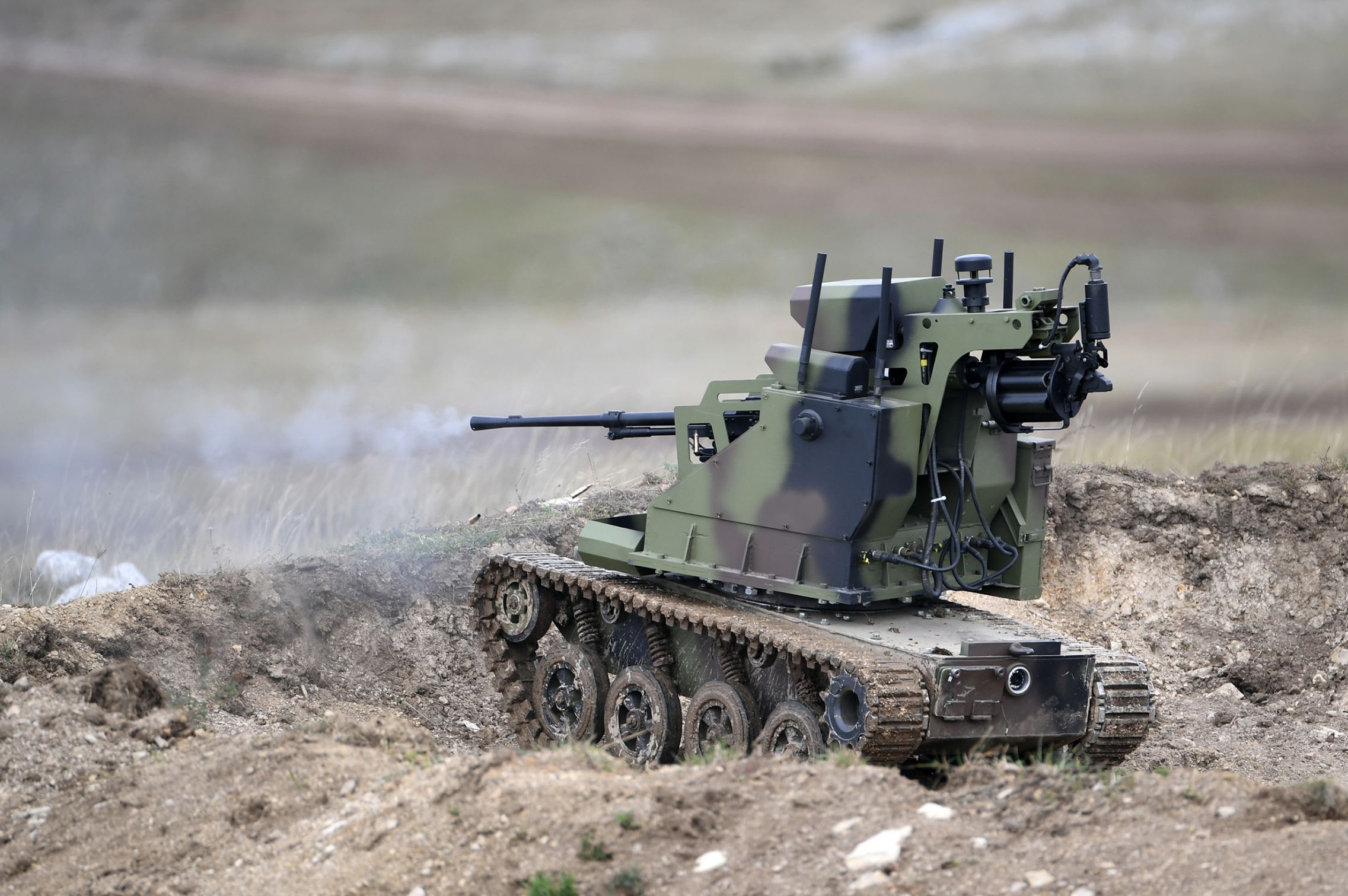While the extraordinary display of North Korean military might on show in Kim Il Sung Square was justifiably the focus of much attention last weekend, over in the Balkans the Serbian Armed Forces put on a military showcase that was dramatic in its own way, during the country’s Joint Action 2020 maneuvers. The tactical exercise that took place on October 10, 2020, included a mixture of new and Cold War-era equipment, originating from China, Russia, and Western Europe. While not among the latest weaponry fielded by Serbia, the combination of the French-designed Gazelle attack helicopter and the Soviet-era 9M14M Malyutka missile made for an impressive show of force, as a quartet of the helicopters hovered in formation before unleashing their anti-tank guided missiles in unison, as seen in the accompanying video below.
After streaking away from the Gazelles, the four Malyutka missiles scored direct hits to knock out targets on the plateau at the Pešter training range in southwestern Serbia. With these objectives hit, and smoke rising over the simulated battlefield, the helicopters launched another salvo of four missiles to finish the job, destroying whatever is left of the targets.
The full sequence can be seen from around the 9:32-minute mark.

The video then moves to a nearby part of the range, where we witness a single Malyutka absolutely obliterate a wooden “house,” sending debris flying into the air like matchwood, prior to the launch of an assault by armored and mechanized infantry units.

Serbia’s remaining Gazelles are relics from the era of the still-unified Yugoslavia, in which these single-engine helicopters were built under license in Mostar, in what is now Bosnia-Herzegovina. Here, Yugoslavia’s SOKO aviation company, which is now defunct, undertook the manufacture of SA341H and improved SA342L Gazelles, in sub-variants that comprised utility, scout, and attack variants, the latter two known as the HERA and GAMA models, respectively.
The locally developed GAMA variant, despite its advancing years, is one of the most heavy-hitting Gazelle models ever to see service, with provisions for up to four 9M14M Malyutka anti-tank missiles, known to NATO as the AT-3 Sagger, and two 9M32M Strela-2M (SA-7 Grail) anti-aircraft missiles. The helicopters serve with the 714th Anti-armor Helicopter Squadron, the “Shadows,” based at Lađevci in central Serbia.
Surprisingly, these veteran helicopters continue in service despite Serbia receiving both Russian-made Mi-35Ms armed with more modern 9M120 Ataka (AT-9 Spiral-2) anti-tank guided missiles, plus Airbus Helicopters’ H145Ms that can be armed with various guns and rockets.

The AT-3 Swatter missile has been license-produced in Serbia, as the Malyutka-2T5. It’s now an obsolescent design that first made its name in Egyptian hands during the 1973 Yom Kippur War.
Just two feet 10 inches long, the 9M14M carries a 6.6-pound hollow-charge warhead for the anti-armor role. It has a 3.1-mile maximum range and makes use of wire guidance, the operator tracking the missile using a flare, which is seen to good effect in the accompanying video.
The full Joint Action 2020 video from the Serbian Ministry of Defense is well worth watching in its entirety. Among the equipment appearing for the first time at this event were the country’s new Russian-supplied Pantsir-S1 self-propelled surface-to-air missile/anti-aircraft artillery systems and the locally developed PASARS-16, a mobile air defense system that is now gaining hybrid missile/artillery armament.


Serbia’s President Aleksandar Vučić also announced that the country’s MiG-29 Fulcrum fighter jets launched air-to-ground rockets during the maneuvers for the first time in 20 years. An onboard sequence also shows the cockpit of the upgraded Serbian MiG-29, which now features an MFI-54 multifunctional color display, part of a package of improvements undertaken in Russia.

Ultimately, these updated Fulcrums might just end up operating alongside the Boeing-Saab T-7, after Serbia expressed interest in a variant of the Red Hawk to supplement the MiG-29s and to replace the SOKO-produced Orao ground-attack jets and Super Galeb jet trainers that also took part in Joint Action 2020.
Also recently provided by Russia, a BRDM-2MS armored reconnaissance vehicle is seen scouting for a battle group. Thirty of these scout cars were provided as a donation from Moscow in 2019, together with 30 T-72B1MS tanks. Meanwhile, surveillance is performed using an indigenous BOV KIV combat vehicle equipped with the MIP-3 multi-sensor reconnaissance package, introduced to service this year.

Indigenous artillery pieces on display included the 155mm Nora-B52 wheeled self-propelled gun-howitzer, upgraded 128mm M-17 Oganj self-propelled multiple rocket launcher, LRSVM Morava multiple rocket launcher, and M-18 Oganj modular multiple rocket launcher.

Finally, Serbia showed some of the advances that it’s made in the development of unmanned technology, with the delivery by helicopter of a pair of Miloš unmanned ground vehicles. These were seen working alongside armored vehicles, engaging targets with their 7.62mm machine guns.

All told, the Joint Action 2020 maneuvers show that Serbia’s armed forces are finally benefitting from much-needed recent investment. Alongside this new equipment, however, it seems that Serbia still sees a role for its veteran, missile-packing Gazelle helicopters.
Contact the author: Thomas@thedrive.com
